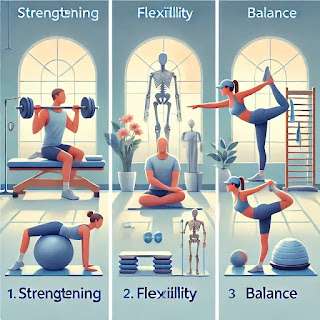Hydrotherapy: A Complete Guide
What is Hydrotherapy?
Hydrotherapy, also known as aquatic therapy or water therapy, involves using water for pain relief, rehabilitation, and overall wellness. This therapy utilizes the natural properties of water, such as buoyancy, resistance, hydrostatic pressure, and temperature regulation, to aid in the treatment of various medical conditions.
It is commonly used for:
- Reducing joint and muscle stress
- Rehabilitation after injury or surgery
- Pain management for arthritis, back pain, and fibromyalgia
- Improving mobility, flexibility, and circulation
How Does Hydrotherapy Work?
Hydrotherapy is effective due to the unique physical properties of water, which help in healing and relaxation:
1️⃣ Buoyancy 🏊♂️
- Water supports the body's weight, reducing pressure on joints and muscles.
- Helps in rehabilitation for patients with arthritis, fractures, or post-surgery recovery.
2️⃣ Resistance 💪
- Water provides natural resistance, which strengthens muscles without the risk of injury.
- Useful for athletes, stroke patients, and elderly individuals.
3️⃣ Hydrostatic Pressure 🌊
- The pressure of water helps reduce swelling and improve blood circulation.
- Beneficial for edema, varicose veins, and cardiovascular health.
4️⃣ Temperature Effects 🌡️
- Warm water (34-38°C or 93-100°F): Relaxes muscles, increases blood flow, and reduces pain.
- Cold water (10-15°C or 50-60°F): Reduces inflammation, numbs pain, and boosts recovery.
Types of Hydrotherapy
1️⃣ Warm Water Therapy (Balneotherapy) 💦
- Uses: Arthritis, chronic pain, stress relief
- Example: Soaking in hot mineral water or taking Epsom salt baths
2️⃣ Contrast Hydrotherapy (Hot & Cold Water Therapy) 🌡️
- Uses: Reduces inflammation, improves circulation
- Example: Alternating between hot and cold water baths
3️⃣ Aquatic Exercise & Therapy 🏊
- Uses: Post-surgery rehab, joint pain relief
- Example: Water aerobics, swimming, underwater treadmill
4️⃣ Cold Water Immersion (Cryotherapy) ❄️
- Uses: Sports recovery, reduces muscle soreness
- Example: Ice baths after intense workouts
5️⃣ Steam Therapy (Sauna & Steam Rooms) 🔥
- Uses: Detoxification, skin health, sinus relief
- Example: Turkish baths, steam rooms
Benefits of Hydrotherapy
✅ Reduces pain and inflammation
✅ Improves joint mobility and flexibility
✅ Enhances blood circulation
✅ Relaxes muscles and reduces stress
✅ Aids in post-surgery and injury rehabilitation
✅ Boosts immune function
Who Can Benefit from Hydrotherapy?
Hydrotherapy is useful for people of all ages and is often recommended for:
👵 Arthritis Patients – Helps relieve joint pain
🦵 Post-Surgery Recovery – Speeds up rehabilitation
🏋️ Athletes – Reduces muscle soreness and speeds recovery
🧑⚕️ Neurological Patients – Improves balance and coordination (e.g., stroke recovery)
🤰 Pregnant Women – Reduces lower back pain and swelling
Precautions & Risks 🚨
⚠️ Not suitable for people with:
❌ Open wounds or infections
❌ Severe heart or respiratory conditions
❌ Uncontrolled blood pressure
❌ Fear of water (aquaphobia)
Consult a doctor before starting hydrotherapy if you have any health concerns.
Conclusion
Hydrotherapy is a safe and effective treatment for a variety of conditions. Whether you’re looking for pain relief, relaxation, or rehabilitation, water-based therapy can be a powerful and natural healing tool.
Interested in trying hydrotherapy? 🏊♂️
- Visit a hydrotherapy center or consult a physiotherapist for the best treatment plan! 🚀






























